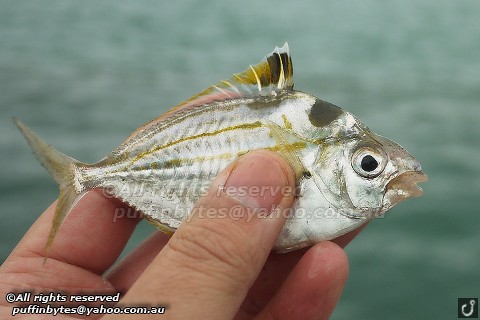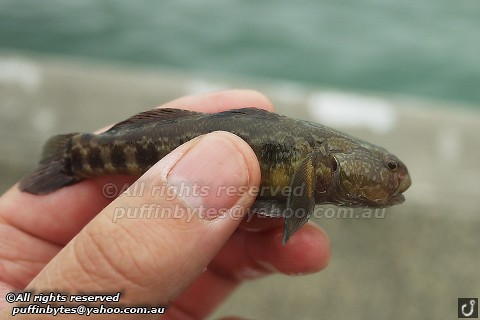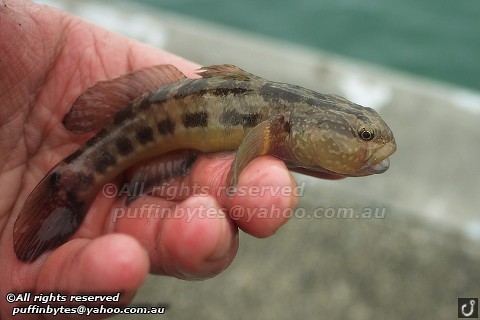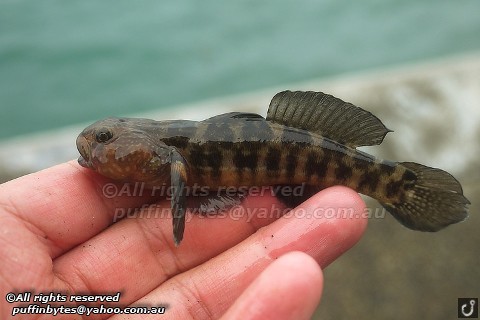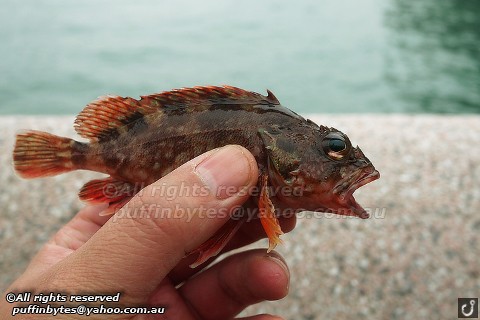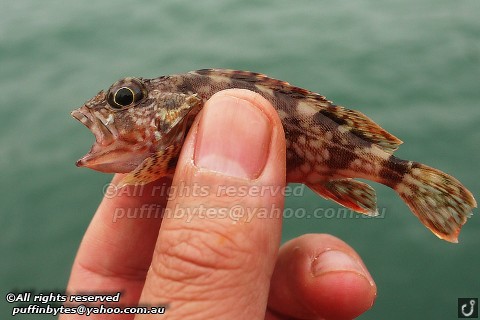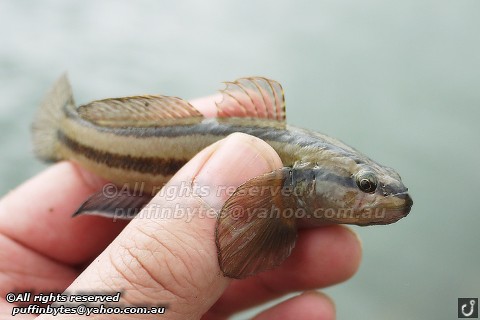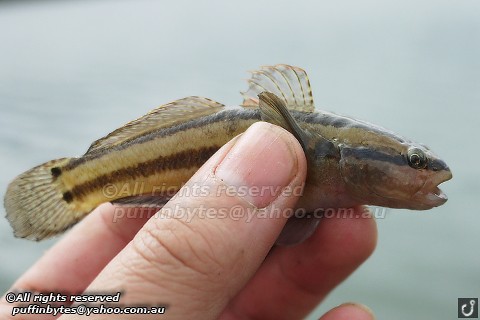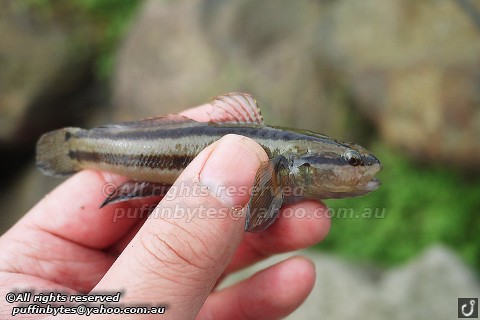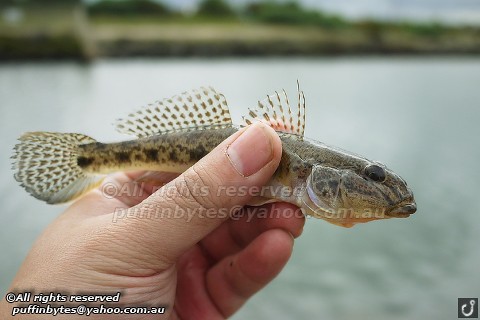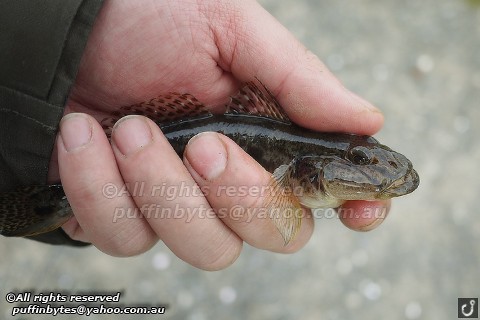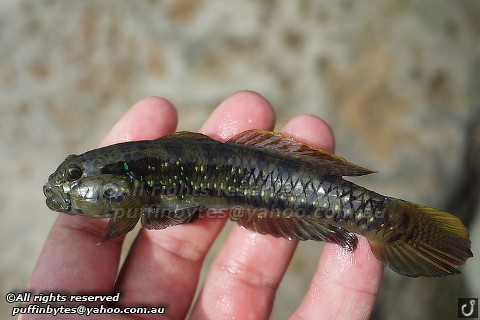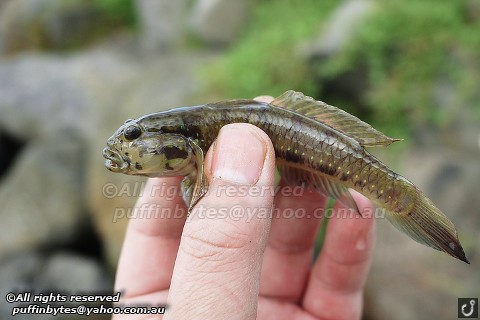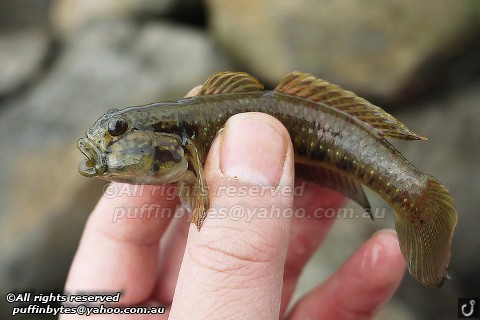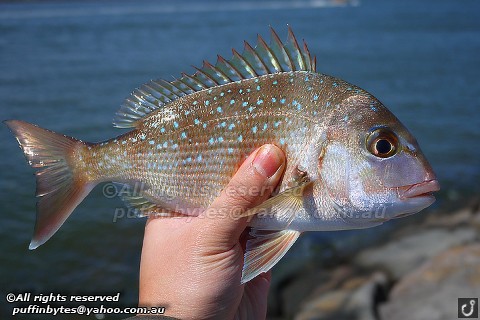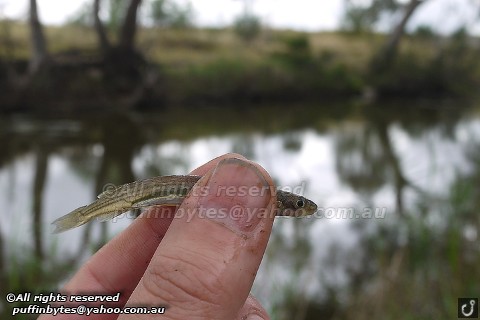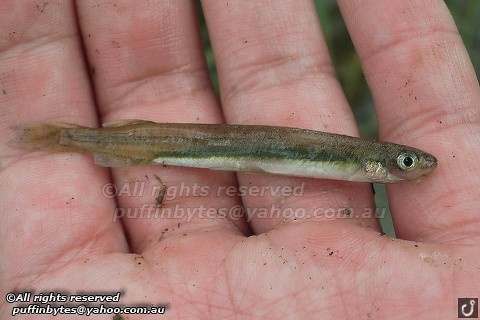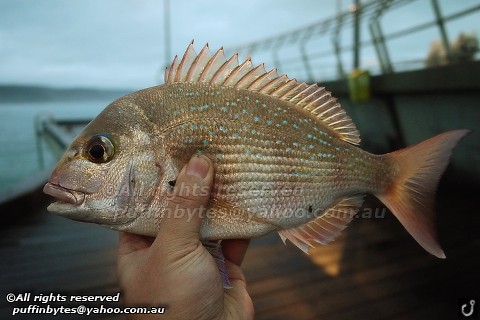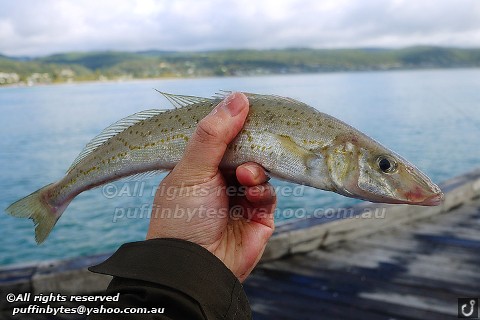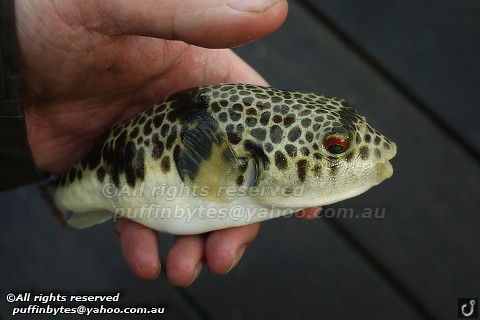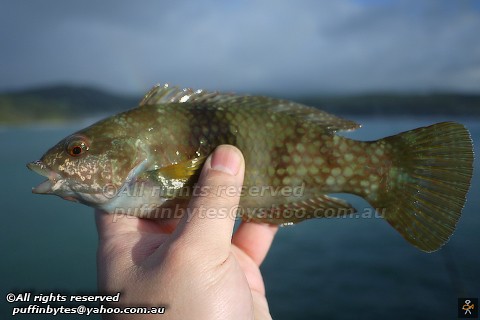Ever since I was a quite young, I was fascinated by the fact that there were species of cichlids living in Victoria. I couldn’t believe that such colourful tropical species of fish could live in the temperate waters of Southern Australian. I originally learnt about them when I borrowed a field guide of freshwater fish of Victoria. On closer inspection, I found that they all occur in the same location in Victoria, and that was a cooling pond for the Hazelwood Powerstation in the LaTrobe valley, where the temperature remains around 26 degrees all year round.
They led to years of wanting to fish this water, but I never got around to doing it. Having lived in London for about 7 years now, I had almost forgotten about them. I hadn’t gone back home of about 4 years and planned a trip Melbourne. During the trip planning process, I open up my freshwater fish of Australia book and found them in the introduced fish section at the back, and my mind was set, this time, on this trip, I would target the cichlids.
Hazelwood is about two and a half hours drives from Melbourne towards the east. As I arrived, the sun was out which was lovely but there was a steady wind of about 20kph. The spot I decided to fish had a few little breakwaters which allowed me to fish into a lea bank. I still got splashed a lot from the waves generated by the winds, but it was quite find because the water was a nice 25 degrees. The water was extremely silty so I couldn't see any fish and wasn't even sure they were there.
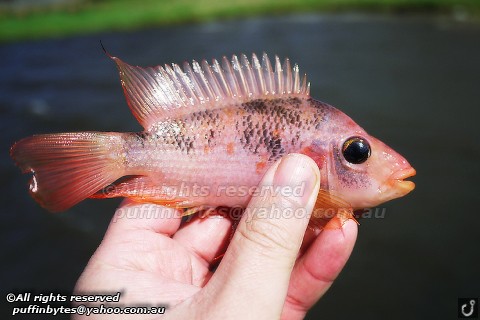
Red Devil - Amphilophus labiatus #136
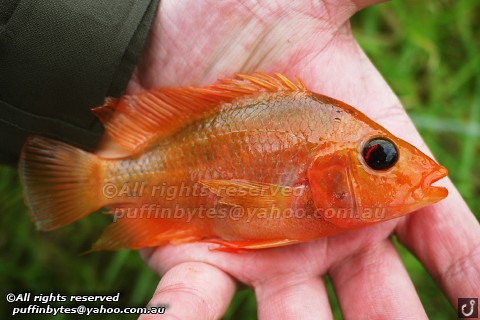
Red Devil - Amphilophus labiatus

Red Devil - Amphilophus labiatus
I rigged up a waggler with a size 16 hook baited with sweet corn. I slowly moved around and caught my first fish, a handsome looking yellow fish and jet black eyes. This was a Red Devil [#136]. Apparently all Australian Red Devils are a Hybrid between A. labiatus and A. citrinellus, but I will just count them as A. labiatus as it’s pretty hard to distinguish them anyway. The next few fish were dark fish, with a yellowish body, red breast, ‘tiger’ stripes and a black tail spot. I originally thought these were Tilapia, but found that they are actually naturally coloured red devils. I ended catching these little devils in a whole rainbow of colours from the naturals, greenish, yellow, orange, red and pink with the largest fish about 5”.
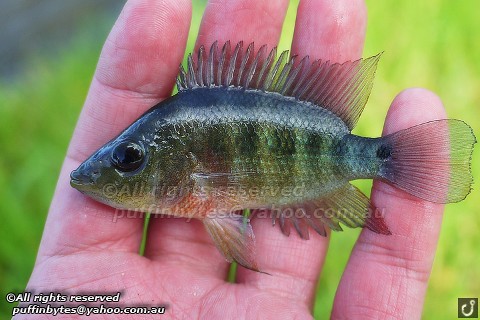
Red Devil - Amphilophus labiatus
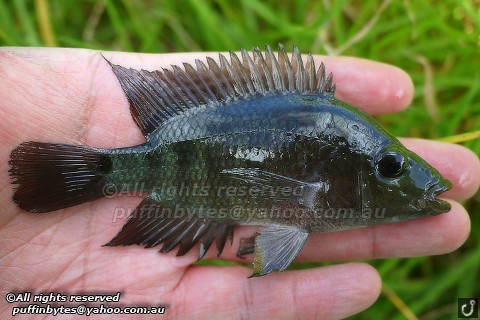
Red Devil - Amphilophus labiatus
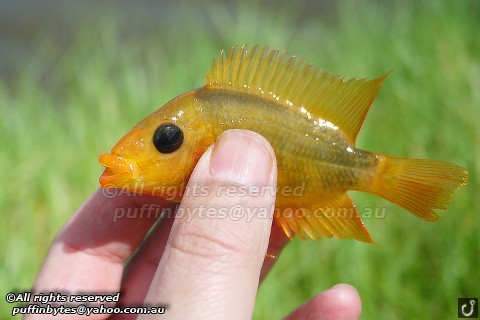
Red Devil - Amphilophus labiatus
Whilst fishing for the devils, decided to fish tight into the margin to see if I could catch anything different and it worked, I hooked into a more cylindrically shaped fish, with a ‘roman’ nose and electric blue stripes. To me, it was a typical shape Psuedotrpheus, also known as Mbuna. I caught several of these, and each had a slightly different shaped nose and body even tending towards the genus Labeotropheus. I’ve decided that it is going to be impossible to identify this fish and to assign in my books as a Psuedotrpheus hybrid [#137]. What I will do with hybrids is that they count as a different species until I catch one of the parents.
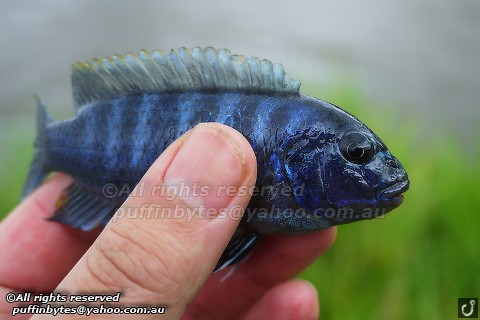
Zebra Mbuna hybrid - Pseudotropheus zebra x 'Hazelwood' #137
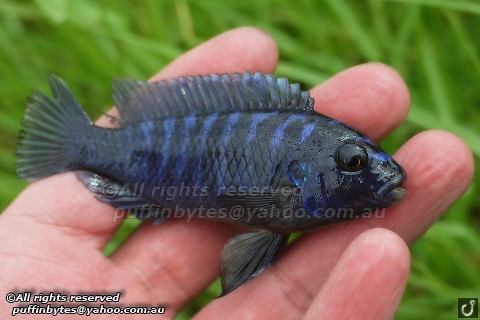
Zebra Mbuna hybrid - Pseudotropheus zebra x 'Hazelwood'
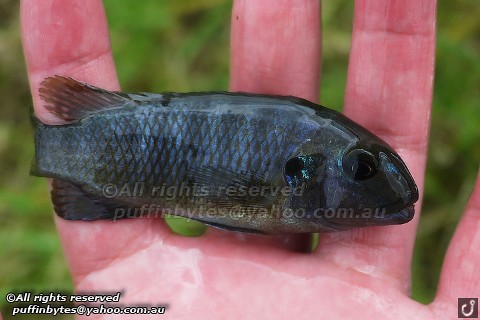
Zebra Mbuna hybrid - Pseudotropheus zebra x 'Hazelwood'
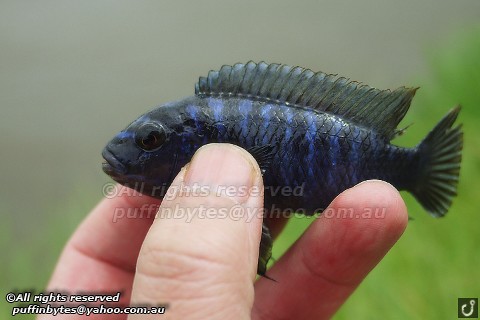
Zebra Mbuna hybrid - Pseudotropheus zebra x 'Hazelwood'
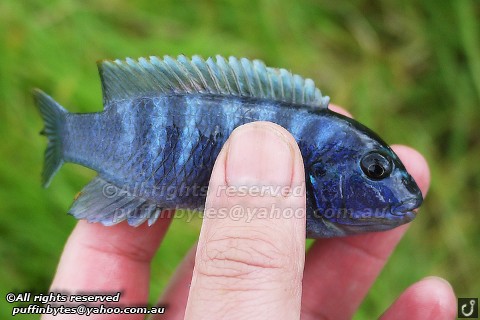
Zebra Mbuna hybrid - Pseudotropheus zebra x 'Hazelwood'
It was a joy to fish here but the plan was to drive up to Mount Baw Baw for a late lunch so I had to pack up. It was hard to leave even though the fish were not of any size, they so colourful, it felt like a dream. If you had just stumbled on this page and you would have thought that I was fishing in the tropics some where, or even the Rift Valley. I was hoping for a few more species, Tilapia, Convicts and maybe Firemouths, but maybe next time.
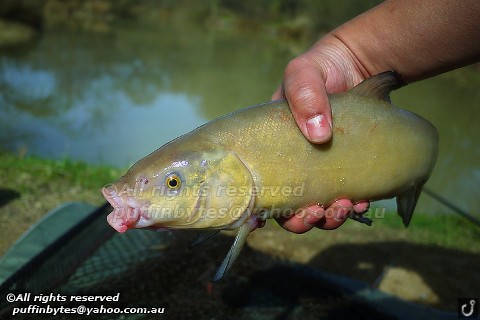 Tench - Tinca tinca
Tench - Tinca tinca
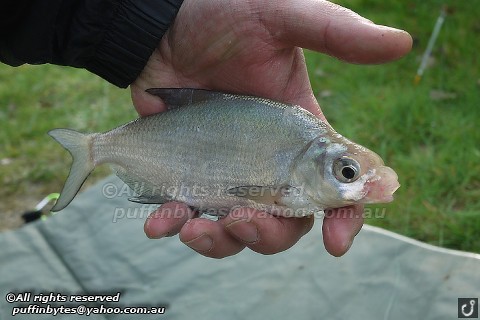 Bream - Abramis brama
Bream - Abramis brama
